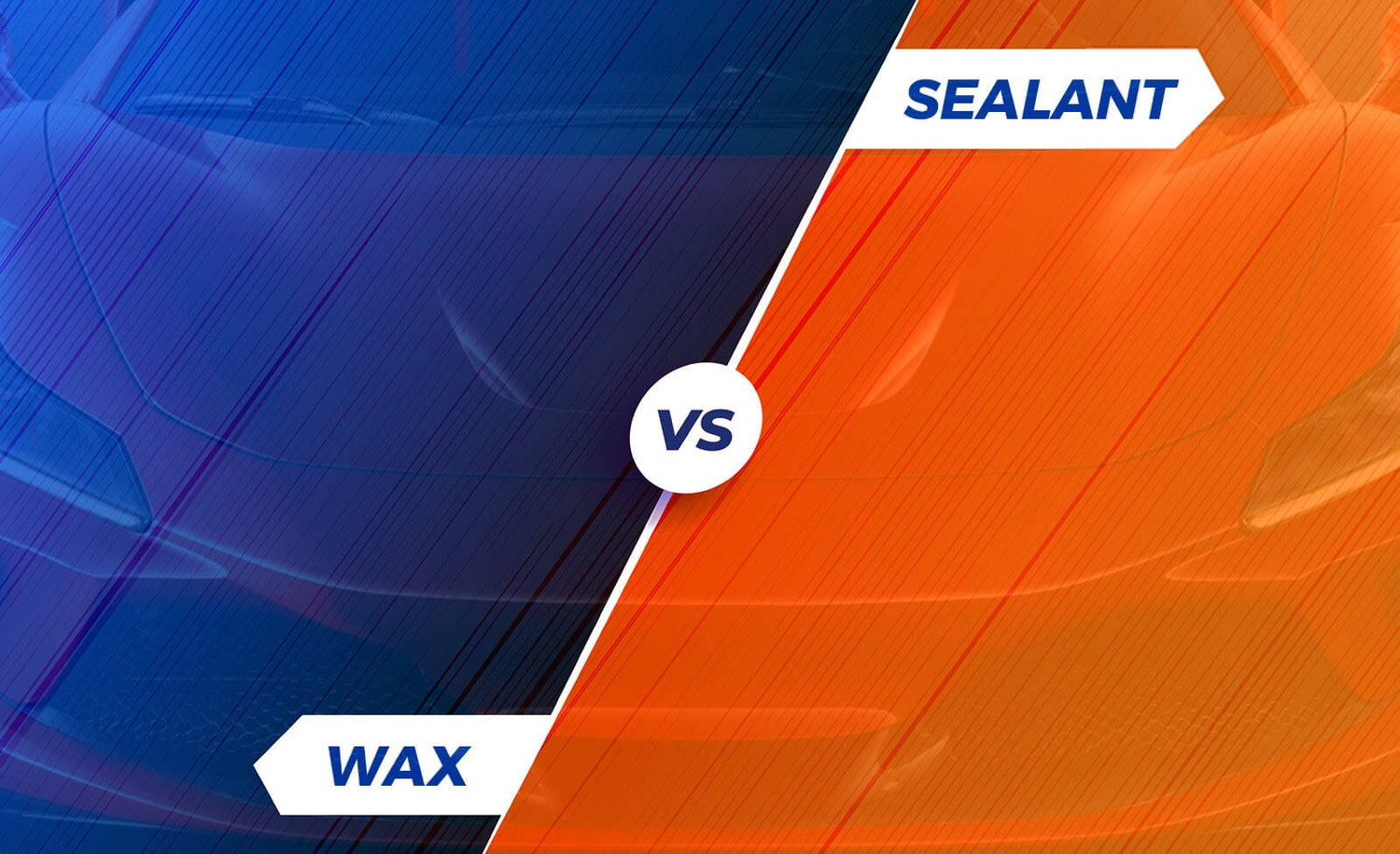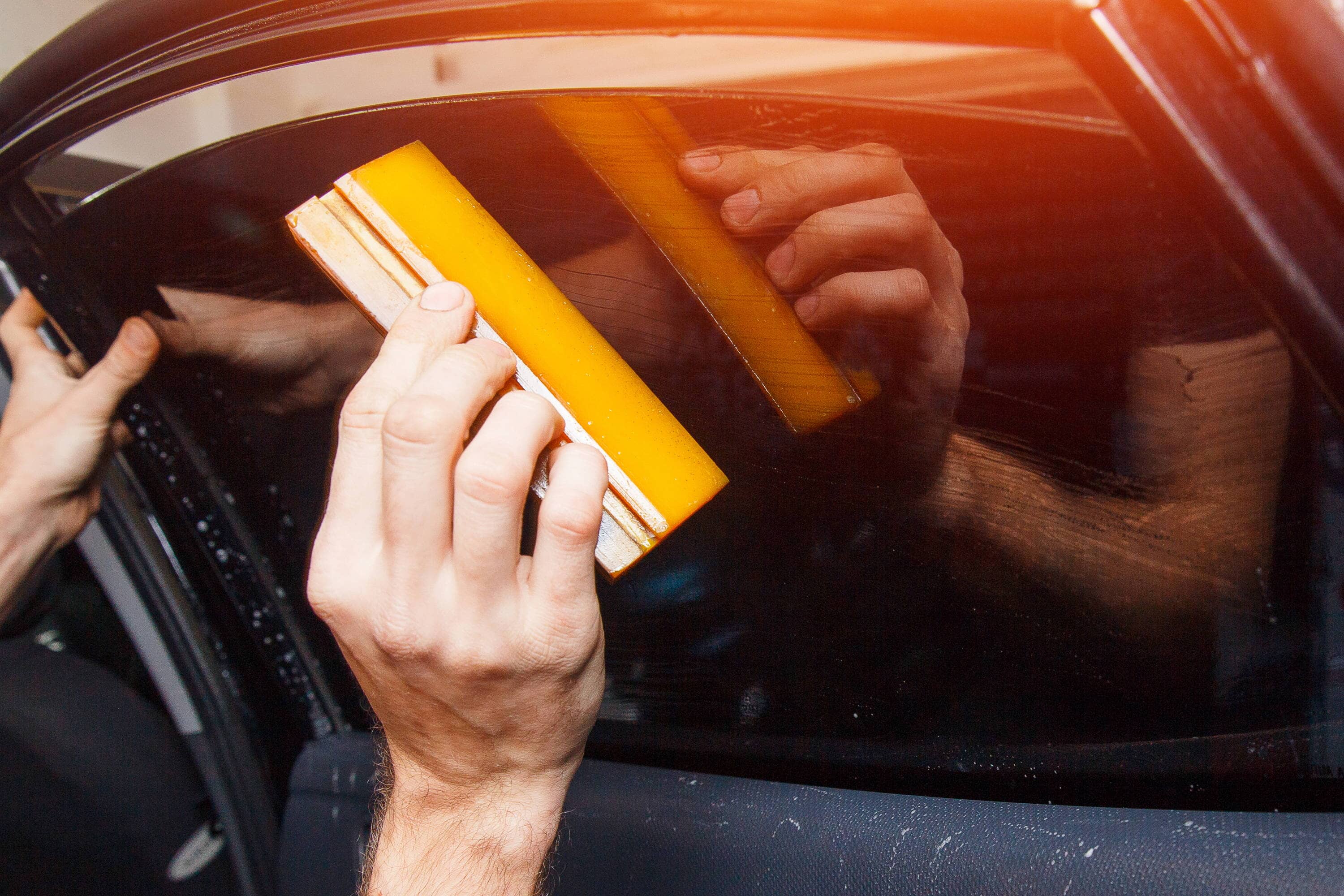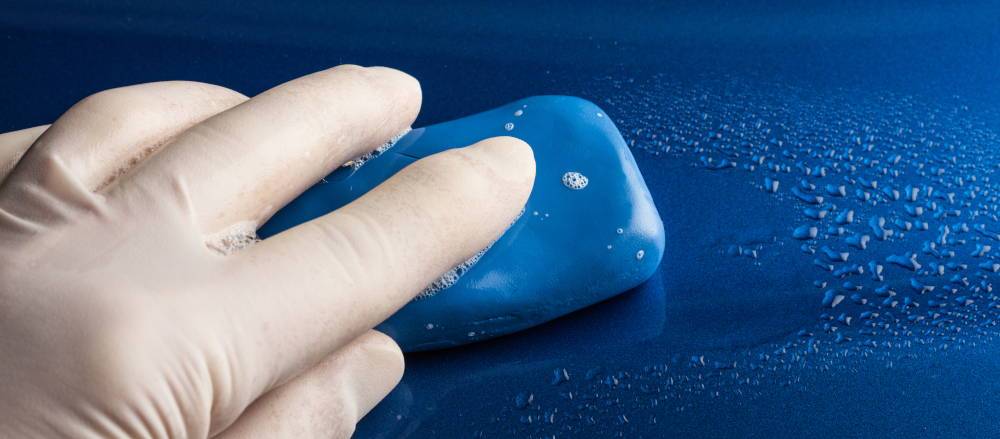So you’ve got a new car...or at least a new paint job. You want to make sure it lasts a long time because it’s your favorite Triple Deep Nebula Blue or whatever color. You want a mirror-like finish and an amazing shine, but also a hydrophobic, non-stick surface to repel water and debris.
But what product do you use? Wax? Paint sealant? Both? Is there even a difference? Which one is better for your vehicle?
There are so many questions, but not a definitive source to answer them all. Until now.
In this article, we’ll take a deep dive into car waxes and paint sealants - what they’re made of, how they work, and whether there’s an easy way to pick the perfect product for your specific vehicle.
Let’s jump in.
Too long; didn’t read? Here’s the Wax vs. Sealant Rundown:
- Both car waxes and paint sealants protect the paint layer from UV rays, intense heat, moisture, oxidation, contaminants, and mechanical erosion.
- Application methods for waxes and sealants are similar, especially with new products on the market.
- Car waxes are derived from natural ingredients and produce a warm glow that blends smoothly and enhances the colors below.
- Paint sealants are entirely synthetic polymer-based solutions which provide a great lasting protection to the color of your car.
- Car waxes are favorable to collectors and classic car enthusiasts for their natural finish.
- Paint sealants produce a distinct glass-like layer over the paint coat below.
- Car waxes will typically last 6 to 8 weeks, depending on the conditions.
- Paint sealants will typically last 4 to 6 months - up to a year, depending on the conditions.
Need more info? Read on below.
You Need a Detailing Product. We've Got You Covered.
Ceramic Spray by Torque Detail
My car is slick as glass!! I put the Ceramic Spray on my Corvette Stingray and it is very slick and shiny. I should have purchased it sooner." - Charlie F.
What Both Have in Common
Most drivers, who are not detailing enthusiasts will easily mistake car wax for paint sealant and vice versa. While they are very similar, they’re not quite the same.
Both products have the same overall function - form a protective layer on top of the clear coat and keep the elements at bay.
Depending on where you live and how you use your vehicle, it will be exposed to UV rays, scorching heat, heavy rain, moisture, snow, salt, and mechanical particles like dust, sand, gravel, dirt and so on. Heck, we can even add tree sap, bird droppings and random chemicals to the list.
These will slowly eat away at your clear coat and paint, and within a few years, you’d be looking at an expensive repaint of the vehicle.
Both car waxes and paint sealants will help you protect your paint, however, the results will vary depending on the product.
What is Car Wax?
The main ingredient of typical car wax is “Carnauba wax” which is naturally secreted by a palm tree, indigenous to northern Brazil. Its function is to coat the palm leaves protecting them from intense heat and moisture.
It’s also called the “Tree of life” because locals have used it for food and medicine production for thousands of years.
And while you can’t drink it to get younger, with proper application, carnauba wax can keep the paint of your car fresh and beautiful for a good amount of time.
The raw carnauba wax is harvested in the form of hard flakes or ground into a powder. It’s mixed with various quantities of other waxes, oils and petroleum derivatives to create an easy to use product for your car.
Once applied to your vehicle, the carnauba wax will exhibit the same inherent properties - deflect UV rays, repel water and prevent contaminants and particles from sticking to the surface.
Car wax doesn’t last forever, though. Because it has natural ingredients, it’s more susceptible to wear and erosion. Depending on the local climate and the intensity of use, it will last for a couple of weeks up to a couple of months.
The main reason why it’s so popular is the marvelous finish it produces - a deep warm shine, which melts into the paint like it was always there, giving the underlying colors more depth and vibrance.
Types of Car Waxes
Car waxes are typically separated based on their ingredients.
- Natural waxes contain a high amount of harvested carnauba wax, but usually not more than 30%. They produce the best results in terms of color and shine, but last shorter.
- Synthetic waxes are virtually indistinguishable from paint sealers. They are entirely artificial and contain polymers that bond to the surface better and form a strong protective layer. These can last up to a year, but don’t produce that deep warm shine.
- Finally, there are cleaner waxes, which do a 3 in 1 job to clean, polish, and protect the paint of your car. They contain cleaning agents as well as fine abrasives to prepare the clear coat for the final waxing. These are recommended if your paint has already suffered some deterioration. And while not as effective as doing these three jobs separately, they are quick and easy to use.
Waxes can also be grouped based on their state.
- Paste waxes are more expensive and typically contain the most natural carnauba, but can be challenging to use. They produce the most beautiful finish, but also degrade faster due to their composition.
- Liquid waxes usually last the longest. They contain more synthetic ingredients, which make them more durable. However, their proper application requires diligence and quick work.
- Spray waxes are the easiest to use, however, they only last a few weeks at most. They are usually affordable and well suited for daily use, touch-ups, or new cars that already come with good quality paint and finish.
An important note:
The above is not universally applicable to all products on the market. The product constitution can be independent of its physical state.
What is Paint Sealant?
Paint sealant is an entirely artificial product. It’s made from petroleum derivatives, polymers and resins, which are engineered to bond perfectly with the clear coat of your paint.
Due to this, paint sealants are much more durable and stronger compared to waxes. The best of them can last up to a year and provide additional resistance against UV rays and chemical erosion. They have higher surface tension, creating a hydrophobic surface - excellent at repelling water, contaminants and particulates.
Sealants form a hard glass-like shell over the paint. The layer is visibly separated from the paint and produces a high-tech glossy shine, suitable for more modern vehicles.
Just like cleaner waxes, paint sealants can also contain some amount of cleaning agents, or polishing compounds with fine abrasives. Depending on your needs these all-in-one paint sealants can clean, polish and seal the paint of your car altogether.
Strip Old Wax...Apply New!
The Torque Detail Full Decontamination Kit
"So the decon wash is superlative. You can actually feel how clean it gets the car surface...I do not know what is in this stuff but it is highly effective." - Daniel M.
How Do The Ingredients Differ?
The exact ingredients of the final products - be it waxes or paint sealants - are proprietary information. Few people know exactly what goes in there, and they can’t tell you.
So, for us the consumers, the difference boils down to a few known variables.
Wax
Car waxes contain various quantities of natural waxes. Carnauba wax is by far the most important, however, other waxes can also be mixed in like beeswax.
Then, natural and synthetic oils, polymers and resins are added to transform the wax mixture into a workable solution, and add further protection to your paint.
Sealant
Sealants are entirely artificial. Chemical engineers develop the best mix of petroleum derivatives, polymers (think plastic, ceramic) and resins to produce a hard and effective protective layer for your paint.
Does Being "Natural" Matter?
Don’t let marketing lingo catch you off guard. No car care product on the market is 100% natural.
At best, your car wax will contain 30% - 40% carnauba wax. Because the carnauba palm thrives specifically in one part of the world, the raw wax is very expensive, thus product prices scale up with the amount.
That said, “natural” matters because it produces a different aesthetic effect, provides different levels of protection and lasts differently.
Does the Application Process Differ?
Indeed, the application process differs, but it differs from product to product - not just necessarily wax vs sealant.
Both can be applied using a microfiber applicator (fancy name for a sponge) or a random-orbit polishing machine with the correct finishing pad.
- Paste products require extra care to spread over the surface and maintain a consistent and thin layer across the body panel.
- Liquid products can dry quicker, which requires you to work quickly but also carefully to get a proper layer on top of your paint.
- Spray products are easiest to apply, since you can work with smaller, more precise quantities and efficiently apply the product on the surface.
Waxing and sealing are finishing operations. There’s primer, paint, clear coat, possibly a ceramic coating and finally a wax or paint sealant. You’re aiming for a thin, consistent layer to enhance the reflectivity and keep the surfaces clean and protected.
A fat layer of goop WILL NOT produce the great colors, shine and reflectivity you’re looking for. If you need more, it’s better to do it in stages.
Depending on the product, you may need to be mindful of the weather and environment at the time you apply it. Working outside in the heat and scorching sun is never a good idea. Waxes are more susceptible to heat, but sealants are not immune either.
Other conditions like moisture and wind speed can also affect the application process.
It’s always recommended to do this job at a clean garage away from the elements. However, some products will be less demanding than others.
Some waxes and sealants require you to come back in 20 - 30 minutes and wipe off any remaining residue with a microfiber cloth. Others you can rub in and walk away until the next application.
All these variables are different from product to product. No two waxes are exactly the same and no two sealants are exactly the same. You should always consult the product description or the manufacturer about how to use their product and achieve the best possible results.
How Car Wax and Car Sealant Affects Paint
For the most part, using a wax or a sealant can only improve the finish of your paint. You’d have to try real hard to mess up your clear coat with these products...
...EXCEPT, if you’re using a multi purpose wax or sealant.
You need to pay special attention if you’re using a cleaner wax or a sealant which contains any polishing compounds. Polishing compounds have abrasive particles which smooth out the clear coat and remove light swirls and scratches.
However, improper application can leave even more scratches, thus special care and technique is required.
Does any sort of wax alter paint?
For the most part, carnauba wax cannot damage your paint. It does not chemically react or contain any abrasives to scratch or erode it.
You should, however, be wary of paint curing for freshly painted vehicles. There is a period of time, after the paint has dried, when it is still outgassing solvents and other substances. You want to wait for these processes to finish before waxing or sealing the paint.
Do Wax or Sealant Products Last Longer?
Paint sealants can last anywhere from a few months up to a year. They are specifically engineered for long term protection of your paint and are recommended for daily driven vehicles and vehicles exposed to harsher conditions.
Due to their natural ingredients, waxes degrade fairly easily. Good quality carnauba wax will last between 6 and 8 weeks. Harsher conditions and daily use will accelerate the erosion and frequent application will be required.
Spray waxes typically last the shortest, but their versatility and ease of use often overcome that drawback.
What You’ve Been Waiting For: Is There Any Aesthetic Difference?
Absolutely!
For the smoothest, deepest glow, high grade carnauba wax is the best. The natural wax will melt into the paint and enhance its color and reflective properties like no synthetic product can.
However, depending on the application, you may want to achieve a more glossy, high-tech shine for your vehicle. A paint sealant will get you that effect, as it forms a distinct shell over the paintwork, which creates a mirror finish.
Can You (And Should You) Use BOTH Wax and Sealer?
Typically, you can.
Some specific products may not be chemically compatible with others. This will not do damage to your paint, but can make both the wax and sealant ineffective at their job.
However, in most cases, layering different finishing products is possible. The rule of thumb is to put the paint sealant first and then finish off with a carnauba wax.
This will let the sealant do its job of...well...sealing the paint and protecting it from all types of degradation. Whatever product you have on the outside will dictate the aesthetic effect and surface properties. Carnauba wax looks just phenomenally, so you want to put it on last.
Summary: Sealant vs. Wax
Okay, what did we learn:
- Both products will do a good job if properly applied.
- Carnauba wax is more beautiful, but less durable.
- Paint sealant is more durable and provides better protection for your paint.
Choosing the right product is often down to what you have to work with.
- What vision do you have for the car?
- Are you doing the work yourself?
- Do you have a garage or a more clean space to work in?
- Is your car in the detailing shop already?
- How often do you plan on re-applying your finishing product?
- Do you want to set it and forget it, or are you involved in the process?
You Need a Detailing Product. We've Got You Covered.
Ceramic Spray by Torque Detail
My car is slick as glass!! I put the Ceramic Spray on my Corvette Stingray and it is very slick and shiny. I should have purchased it sooner."
- Charlie F.







